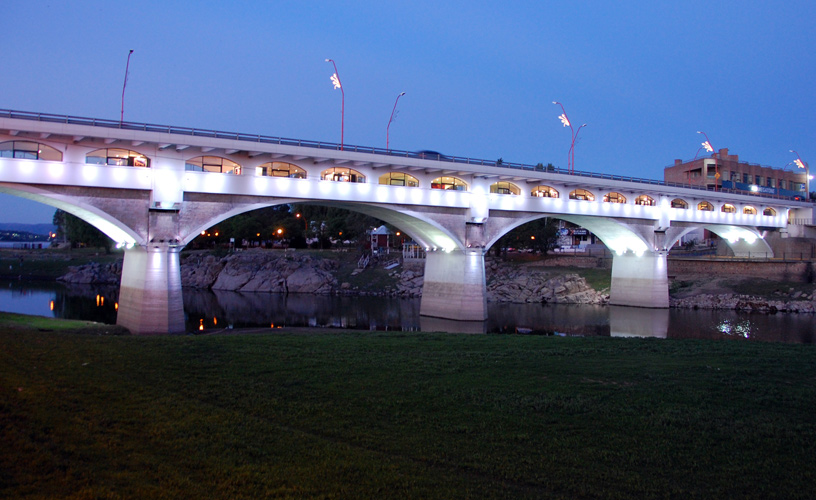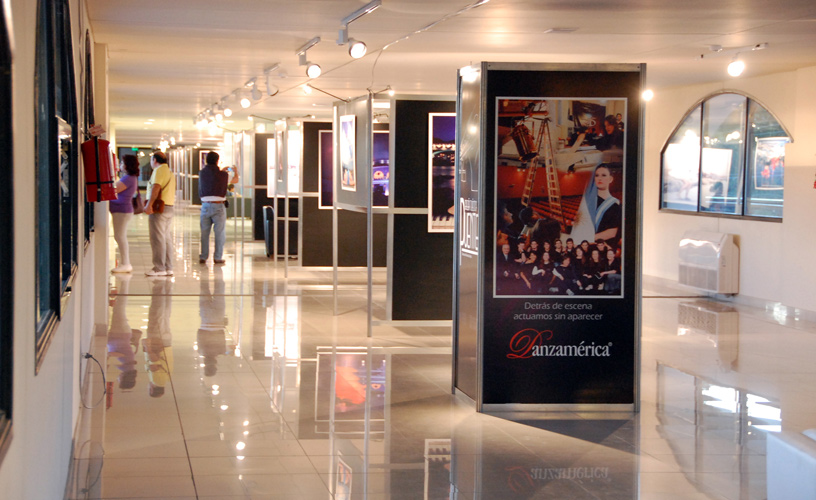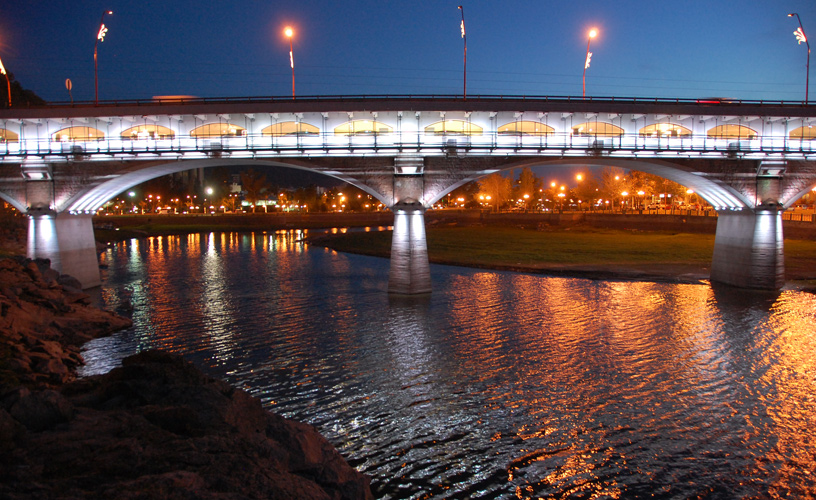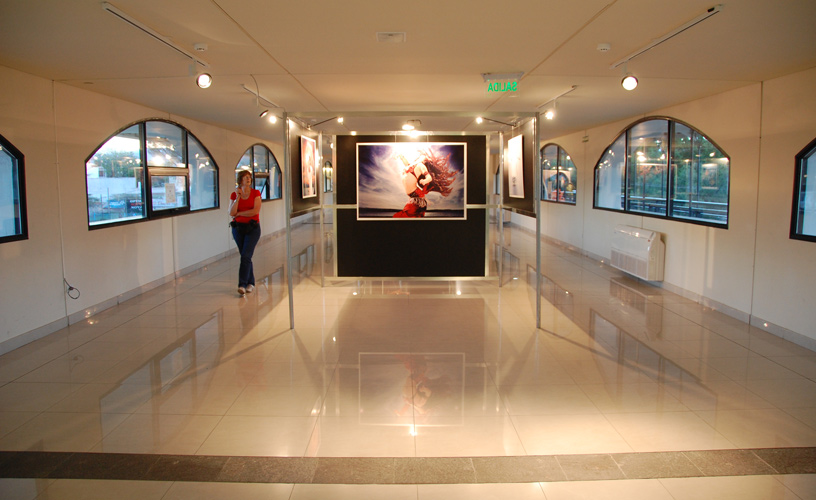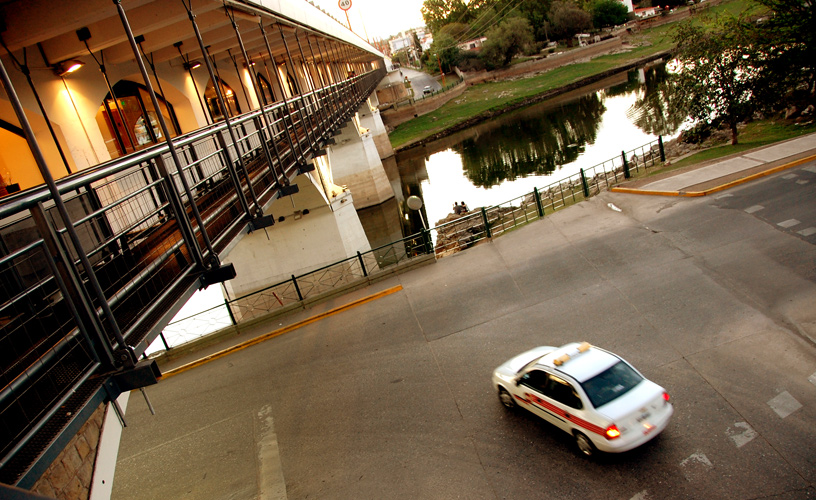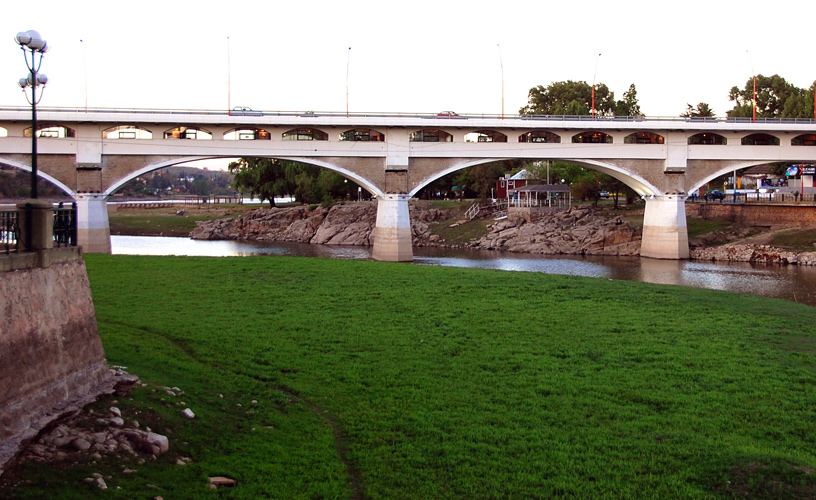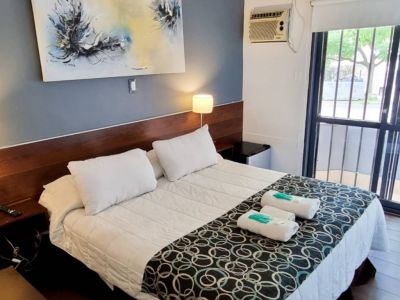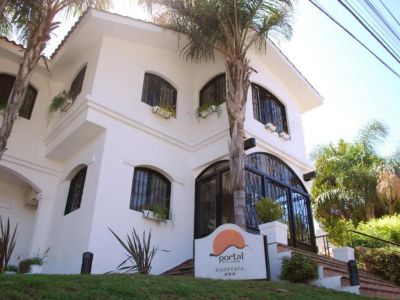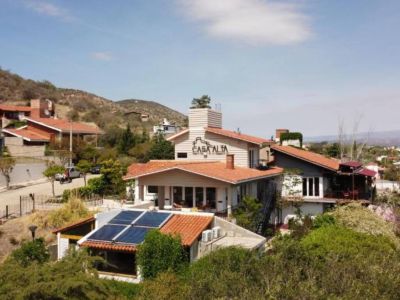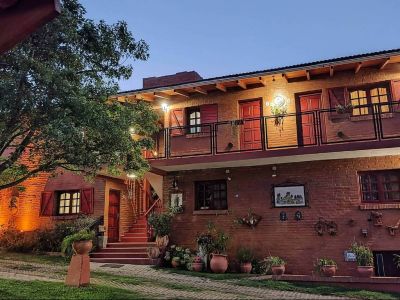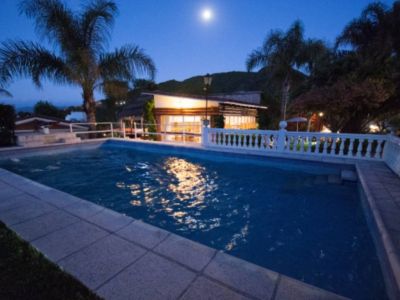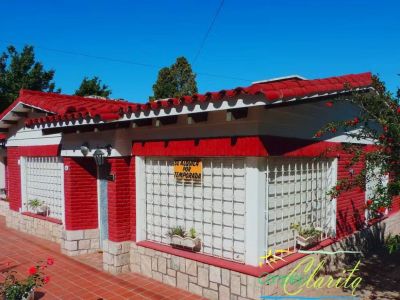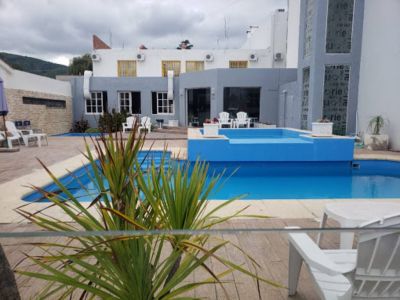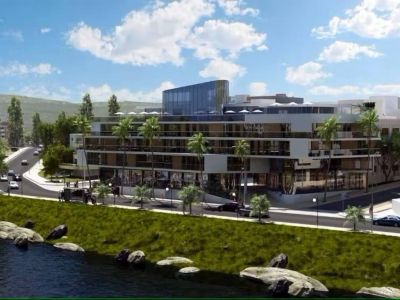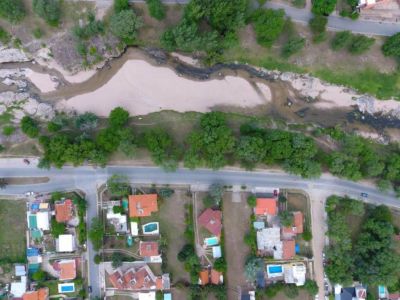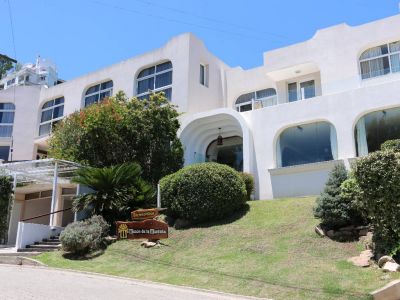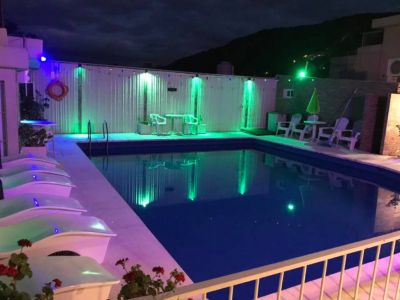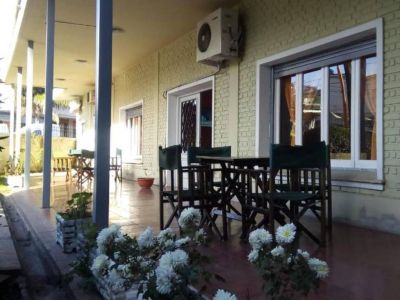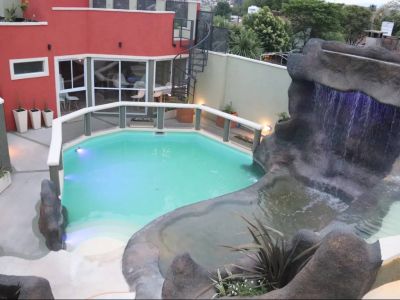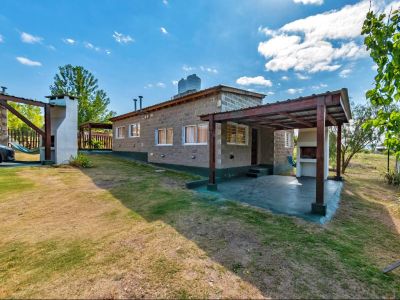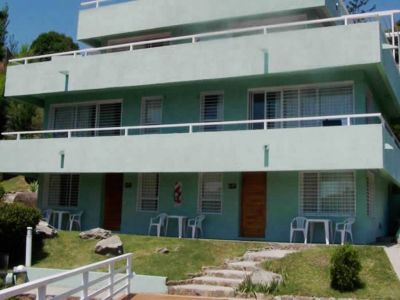The old Uruguay Bridge over the San Antonio River has two supports on land and three columns that get deep into the water, as well as other bases that let the structure span the main affluent to Lake San Roque. But since quite recently, it has ceased to be a simple road pass to become a new attraction in Carlos Paz.
It dates back to the 1940s, and it was built to join both shores of the city and the rest of the Punilla Valley. Starting as a project shared between the province and the municipality, it has been transformed, modernized and added some details that make it stand out.
Cars keep going along its upper lane; the multi-purpose gallery stands below it. In addition, a pedestrian pass is accessed through side stairs. A tourist office helps visitors have another reference point inside this tourist city par excellence.
Uruguay: A Bridge towards Culture
Determined to see the inside of this venue, we went up the staircase and entered a long corridor with a shiny tiled floor that dazzled us due to the great amount of light that enters through the side windows.
We felt we were smoothly sliding along the entirely white corridor. Enormous panels gave us a show of large digital images by two local photographers. An area with ample armchairs invited us to sit and observe. In these large spaces with natural light, the works really showed off. We had left the hot Córdoba afternoon outside and, to our surprise, silence was ruling inside.
At one of its ends, we found the tourist office and learned a little bit more about the activities available at this cultural venue. “Exhibitions are temporary and multidisciplinary. Open to visitors year round with ample opening hours. Public welfare institutions may present lectures or parades just through a minor proceeding”, the receptionist explained.
We really thought it was an excellent way to go from one area in town to another and enjoy an artistic break. The scenery was completed with the beginning of the waterfront and a small pond/river with grass areas and large rocks on the shores.
The waxing moon and the contour of the bridge were duplicated on the river, whose waters were completely still. Short stanzas of Argentinian music started the sound. The violins, charangos and sicus stood out and deafened the traffic sounds. A folkloric atmosphere of zamba and malambo took hold of our senses and made us move our unskilled feet to the sound of music. Tango started to sound and, as a finale, we listened to some chords of the Argentinian National Anthem.
It was all emotion during that sequence of color changing lights that provided a splendid frame for our tour during a summer night in which we had not needed to invest any money.
Mónica Pons
Eduardo Epifanio
